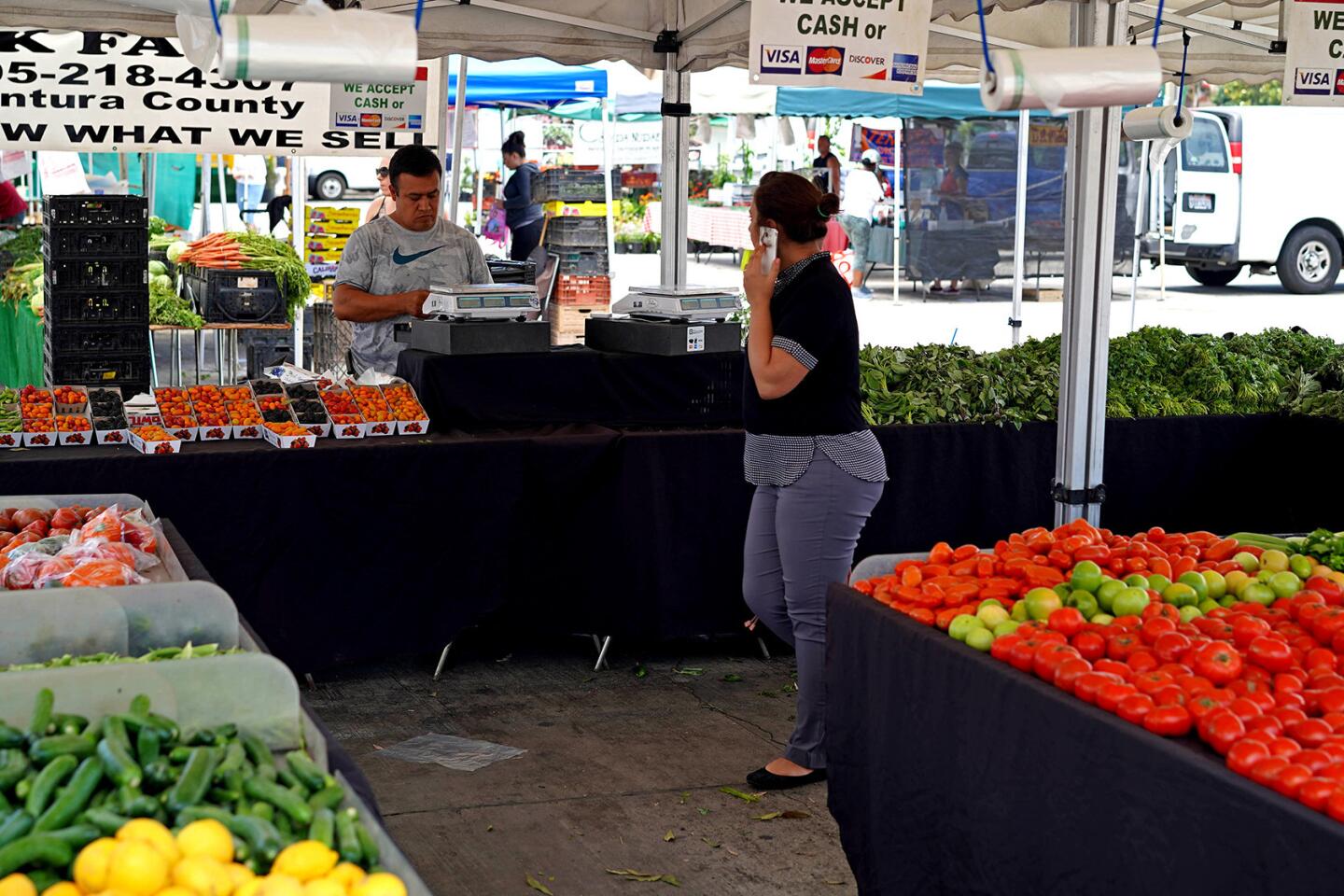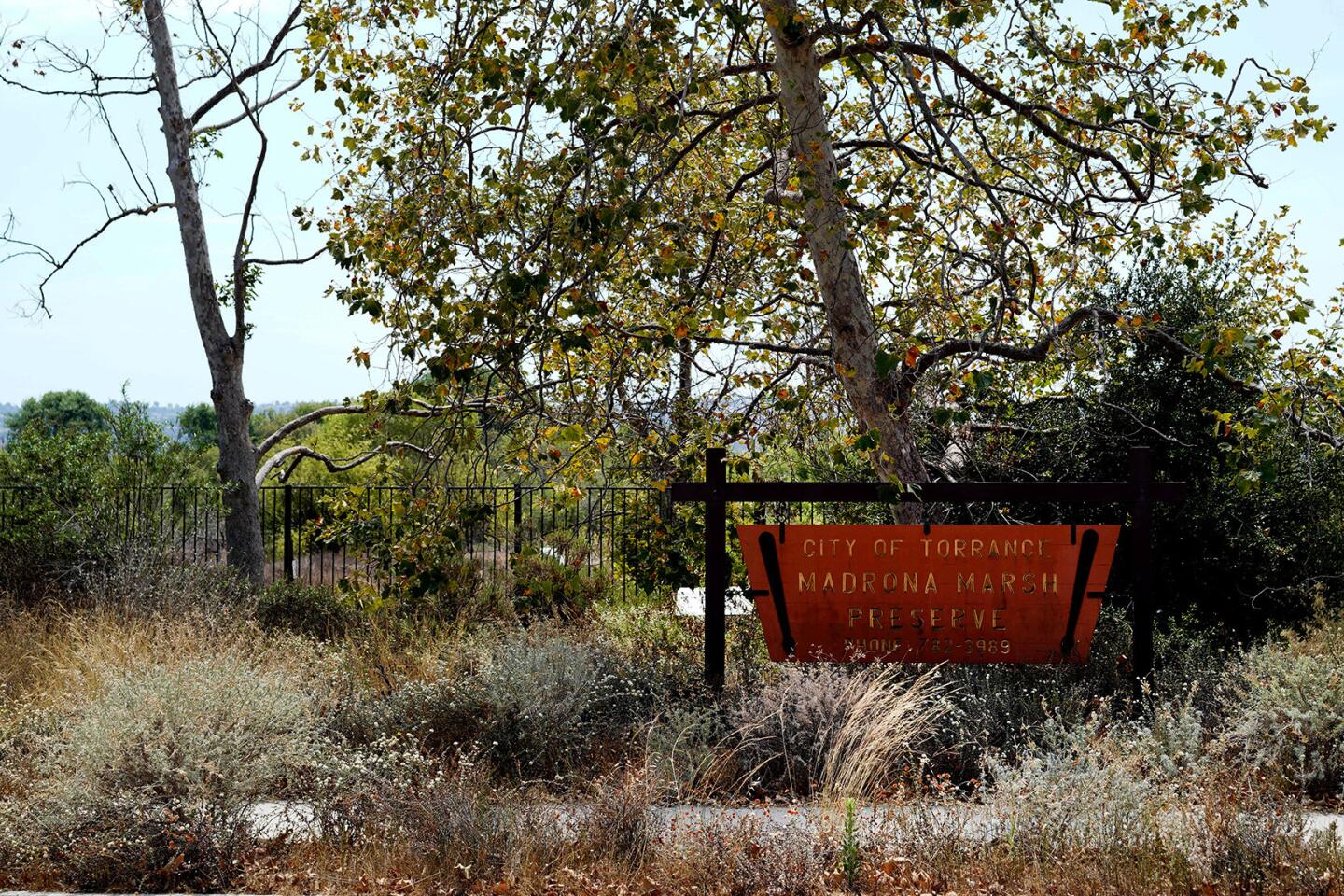Neighborhood Spotlight: Torrance’s work ethic, economic diversity have kept it healthy through hard times
- Share via
Los Angeles in 1910 was racked by labor strife, and a strike by the city’s ironworkers did not sit well with the business community.
It was against that backdrop that real estate developer Jared Sidney Torrance decided to found an open-shop industrial community that was meant to be free from the conflict between labor and management that racked the city of L.A.
Declaring his intentions to create a “workingman’s paradise,” Torrance purchased more than 3,000 acres of ranch land southwest of the city. He engaged the firm of Olmsted and Olmsted to design a planned community there, conceived as a city of discrete districts where land uses would be strictly separated. Worker housing was built on the other side of the business district from the factory district, which was sited in an area where onshore ocean breezes would blow pollution inland and away from the city.
Torrance’s vision of a purpose-built industrial powerhouse of a city would, over time, largely come to fruition.
By the time property in the newly minted town of Torrance went on sale in 1912, industry was already moving in. Rail lines were extended to the town, and a tool manufacturer relocated its operations there. One year after the city incorporated in 1921, oil was struck, leading to a boom that laid the foundation for Torrance’s still active petroleum industry.
The aerospace industry also played a major role in Torrance’s maturation as a center of business, with companies such as Honeywell Aerospace locating major operations there. In the 1960s, Toyota led an influx of Japanese companies to the city, which now also hosts the North American headquarters of Honda and All Nippon Airways.
Despite the loss of Toyota’s headquarters to Plano, Texas, last year, more than 400 businesses still have their head offices in Torrance, and 17.5% of employment in the city is still in manufacturing. Not many cities could weather the economic blow of a major employer such as Toyota pulling up stakes. Jared Torrance’s industrial utopia did.
Neighborhood highlights
A diversified economy: Manufacturing may be king in Torrance, but employment in other sectors is strong as well, creating a stable economic base for the city.
Safety first: Torrance consistently ranks among the safest cities of similar size, although it should be noted that there is some controversy over how the city measures crime.
South Bay living: Torrance’s beach, parks and cultural attractions, combined with cooling onshore breezes, make the city a great place to live as well as work.
Neighborhood challenge
Traffic, traffic, traffic: Like the rest of the booming Westside/South Bay corridor, commutes into and out of Torrance are pretty much the worst.
Expert insight
Mark Leddy, a Schneider Properties agent with a decade of experience in the area, said Torrance’s sleepy, single-family reputation is becoming a bit more youthful and vibrant.
“A lot of people are buying homes from the previous generation, opening up the floor plans and finishing them in a contemporary style,” Leddy said.
North Torrance, with its proximity to the freeways and nearby commercial areas, works better for those with a commute. The west and south sides, he said, draw people looking for a life near the water.
He mentioned there’s a cloud looming over the Torrance refinery after federal inspectors uncovered hazardous-waste violations, but that hasn’t stopped people from moving in.
“We’re seeing a lack of inventory and a surplus of buyers,” Leddy said, adding that the occasional new developments sell out quickly.
Market snapshot
The majority of Torrance is divided into five ZIP Codes: 90501, 90502, 90503, 90504 and 90505. Of those areas combined, based on 94 sales, the median sales price for single-family homes in May was $827,000, according to CoreLogic.
The most sales took place in the 90505 ZIP Code. Based on 30 sales, the median sales price for single-family homes in May was $961,000, up 4.6% year over year, according to CoreLogic.
Report card
There are 29 public schools within the Torrance boundaries. Of those, 28 scored over 800 on the 2013 Academic Performance Index, and eight scored over 900.
Anza Elementary scored the highest, at 916, and Bert M. Lynn Middle scored the second highest, at 910. Calle Mayor Middle and Edward J. Richardson Middle both scored 907, and Riviera Elementary and Walteria Elementary both scored 906.
Times staff writer Jack Flemming contributed to this report.
More to Read
Sign up for Essential California
The most important California stories and recommendations in your inbox every morning.
You may occasionally receive promotional content from the Los Angeles Times.










